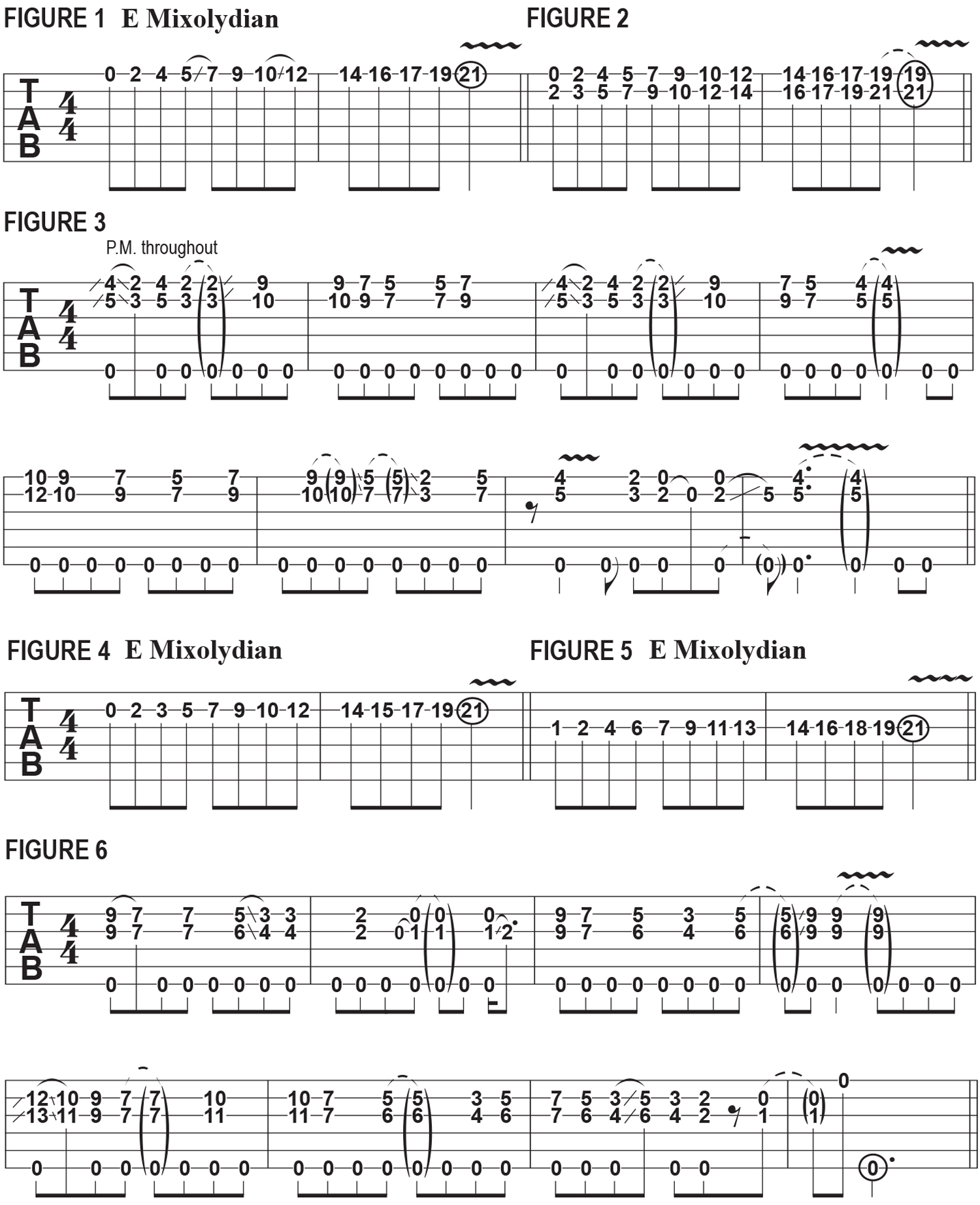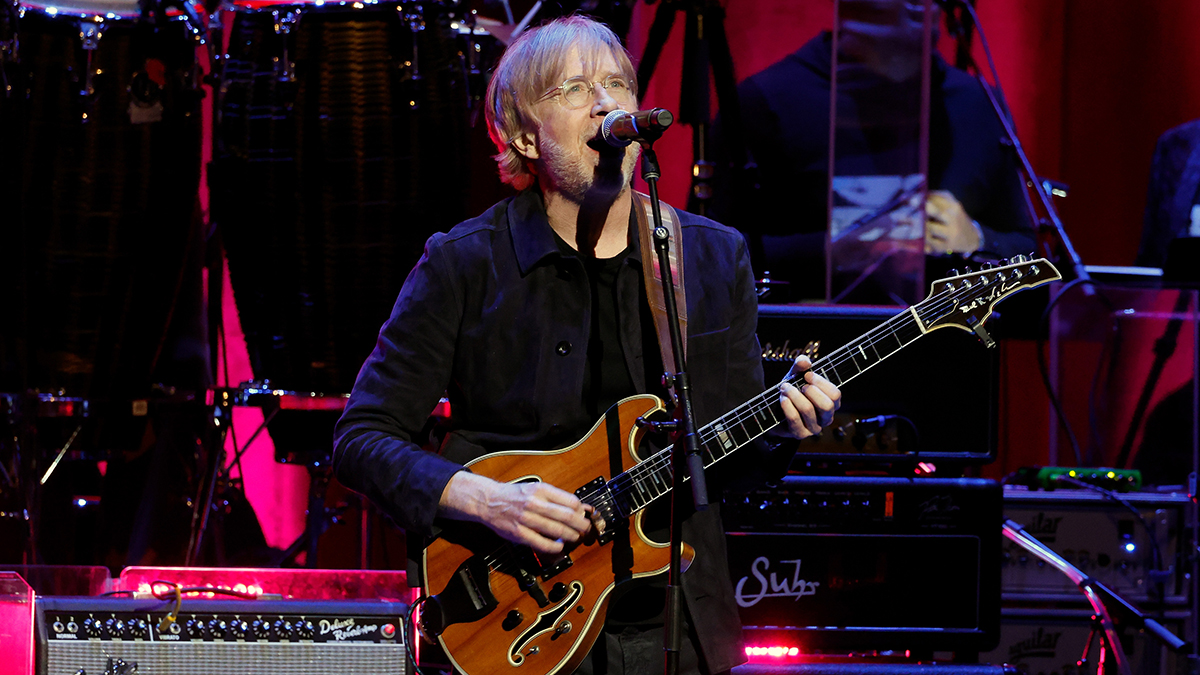Harmonizing a Melody Over a Pedal Tone
In our previous examinations of drone-based licks, we explored ways to play single-note melodies against open-string pedal tones. This month, I’ll show you how to harmonize a melodic line over an open-string drone. One of the cool things about doing this is that it serves to emulate the sound of an open tuning by suggesting chordal sounds. It’s a little more challenging to achieve this kind of sound in standard tuning, but once you have the concept and technique down, the benefit is that you can emulate an open-tuning sound in any key.
For this lesson, let’s stick with using our open low E string as a pedal tone/drone, and we will devise melodic lines based on the E Mixolydian mode (E F# G# A B C# D). Keep in mind that the tonality reflected by the Mixolydian mode is a dominant-seven sound, so in the key of E, the harmonic reference is E7 (E G# B D).

Let’s begin with melodic pairs of notes, played thirds apart on adjacent strings, starting with the top two. FIGURE 1 shows E Mixolydian played up the high E string to the 21st fret. If we harmonize each of these notes a third below, the first note, the open high E, would be harmonized by C#, on the B string’s second fret. Just as you ascend through all of the scale degrees of E Mixolydian on the high E string, starting from E, you can do the same on the B string, starting from C#, and play diatonically to—within the scale structure of—E Mixolydian, moving from C# to D, E, F#, G#, A, etc. When played as pairs, thirds apart, the note combinations are C# and E, D and F#, E and G#, F# and A, etc., as illustrated in FIGURE 2.
Once you’ve memorized the pattern and shapes of thirds in E Mixolydian on the top two strings, you can craft harmonized melodies, which you can play over the open low E pedal tone. FIGURE 3 offers an eight-bar example of this approach, with thirds played up and down the top two strings, sounded over the rearticulated open low-E drone. I perform this example fingerstyle, picking the low E string with my thumb, and the top two strings with my index and middle fingers.
Now let’s move the concept down to the B and G strings. FIGURES 4 and 5 illustrate the E Mixolydian mode played up the neck on each of these strings individually, and FIGURE 6 is an eight-bar example of a two-note harmonized melody played on these strings, again over an open low E pedal tone. Notice that the melody is phrased in a syncopated rhythm, with accents falling on many of the upbeats, which balances nicely against the steady eighth-note drive of the low-E pedal tone.
All the latest guitar news, interviews, lessons, reviews, deals and more, direct to your inbox!
Guitar World Associate Editor Andy Aledort is recognized worldwide for his vast contributions to guitar instruction, via his many best-selling instructional DVDs, transcription books and online lessons. Andy is a regular contributor to Guitar World and Truefire, and has toured with Dickey Betts of the Allman Brothers, as well as participating in several Jimi Hendrix Tribute Tours.

